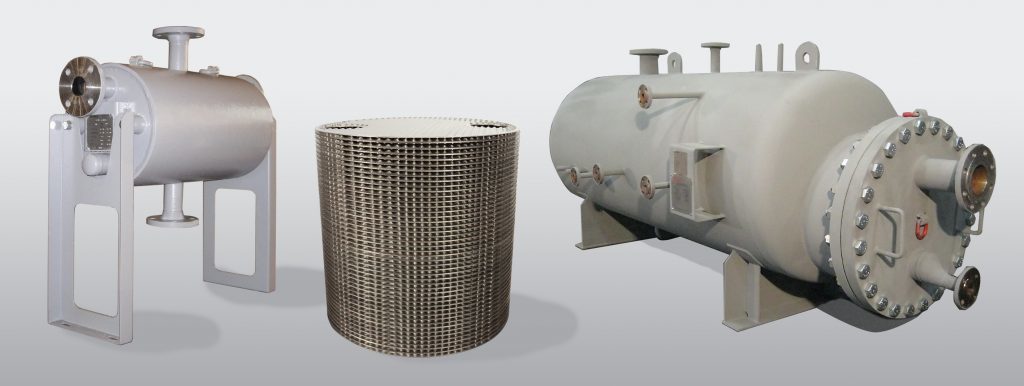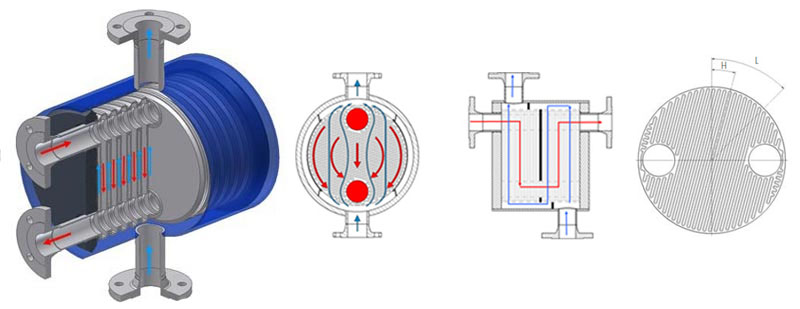Plate & Shell
XPS Form and function
The plate side consists of a pack of round corrugated plates, which are alternately welded together on the circumference or on the two openings in the plates.
The shell side is a cylindrical shell either fully welded, openable at one side or openable at both sides.
The gaps between the corrugated plates form flow channels, which primary and secondary media flow through alternately. Flow directors in the shell side prevent any bypass – flow between shell and plate pack, which reduces thermal performance.
The flow direction of both media can be arranged as counter-flow, co-current or cross-flow. The heat is transferred via the corrugated plates, which create turbulence and enhance heat transfer. When one or both media are evaporating or condensing partly or completely, it is called a two-phase application.
XPS plate heat exchangers are available in five sizes and with different corrugation patterns, i.e. with different corrugation angles and pressing depths.
H-plates allow high heat transfer rates caused by a high turbulent flow. L-plates are used in applications which are optimized for a minimal pressure loss, or hydraulically limited.
In gas / gas – applications or when the media is contaminated with solids G-plates are often used, which has a larger cross-sectional area.
| Design Pressure | – 1 to 400 bar |
| Design Temperature | – 200 °C to + 500 °C |
| Plate materials | AISI316L, titanium and Nikel alloys |
| Shell materials | Carbon steel, stainless steel, titanium and Nikel alloys |
| Nozzle sizes | 3/4” a 40” |





